This week, the ROCKETEER is looking at the fine print. By which I mean, stories about tiny people.
Shrinking stories have been popular for a very long time. It’s a cheap trick type of story plot, especially when the special effects are poor. But we continue to love them anyway. It’s not hard to find examples. The most recent version I know of came out a few months ago—Ant-Man and the Wasp: Quantumania (2023). But examples of this type of story go back hundreds of years. During the 20th century we see examples in—The Incredible Shrinking Man (1957), Fantastic Voyage (1966), Land of the Giants (TV 1968-1970), Innerspace (1987), and Honey I Shrunk the Kids (1989). A few excellent story examples from the pulp era are—“Dr. Cyclops” (1940) and “The Infinite Moment” (1942) both by Henry Kuttner, and “Out of the Atomfire” (1951) by Bryce Walton. You can trace the idea back to Johnathon Swift’s Gulliver’s Travels (1726) and the land of Brobdingnag. This country is the opposite of famed, Lilliput. Here Gulliver is a tiny man in a world of giants. The story type may go back even further but I have no examples of this.
Why are we so fascinated by this idea?
Potentially, it’s just that we’re amused at the thought of using straight pins as swords to fight bees. Although this angle may please some people, I think there’s more to it. These types of stories allow for variant perspectives and the mental effort it takes to think about this is very satisfying. We immediately imagine what we might do if we had become a tiny person in our ordinary world. Although this change of perspective can come from people shrinking down, it can also come from other things getting big. For example, insects. There were a slew of movies in 1950’s about this. A famous example was called, Them (1954) which is a story about giant atomic ants terrorizing the southwestern United States. There were plenty of other giant bug movies as well including, Beginning of the End (1957) and The Wasp Woman (1959).
During the early pulp era, Murray Leinster wrote two wonderful stories showing giant insects hunting human beings—“The Mad Planet” (1921) and “The Red Dust” (1921). In 1956 he reworked both of these plots into the book-length— The Forgotten Planet.
Battling giant insects isn’t the only fictional scenario for tiny people. There’s usually a psychopathic doctor with a shrinking ray out there somewhere. He’ll use this nasty device to terrorize people he despises or just get them out of the way. “Dr. Cyclops” by Henry Kuttner is this sort of story. Doctors can also find altruistic reasons to make people tiny. Sometimes, they’re trying to fix things inside a body. Predictably, these intra-body medical procedures often go wrong. We find this type of plot in Fantastic Voyage and Innerspace. We also see it in the Lost In Space episode “Trip Through the Robot" (1967).
Similarly, Doctor Who gets lost inside a mammoth-sized Dalek during the 12th Doctor’s tenure in “Into the Dalek” (2014).
Another variation of the shrinking theme is when a person gets so tiny they enter into another universe. We see examples of this type of shrinking story in Henry Kuttner’s “The Infinite Moment” and Bryce Walton’s “Out of the Atomfire.” This is also implied at the end of The Incredible Shrinking Man movie and is loosely referenced at the end of the first Men in Black (1997) movie. I find this subatomic variation the most interesting of all the types.
During the 1940’s and 1950’s the idea was that these other universes existed at the level of the atom. If we were to write on this theme today we might explain it differently since science has moved beyond the Rutherford–Bohr model. In the newest Ant Man and the Wasp movie they shrink down into the “quantum realm.” This is similar to the atomic model of an alternate universe but using updated physics models. The metaphor of the tiny world can be expanded into other types of universes as well. We see this in the Tron films where the hero becomes part of a computer world filled with human-like “programs.”
Tiny people often get their revenge in very clever ways before finding methods to get back to their proper sizes. This is shown very well in Murray Leinster’s “Fury from Lilliput” (August 1939) when the tiny hero finds a way to burn down the bad guy’s house. We also see this in the television show Land of the Giants, where every week the heroes find themselves battling giant perils.
The “shrinking” theme in science fiction is indeed evergreen. Authors have been playing around with it for at least 300 years. And it is a fine analogy for changing one’s perspective. There are certainly other ways to get a character out of a mental rut but this one gets right to the point, and quickly. After all, when you become the size of a mouse, you have to think fast or you’ll end up as some hungry cat’s dinner.
This is the Rocketeer signing off for today.


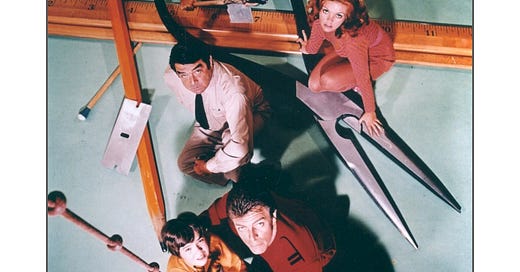



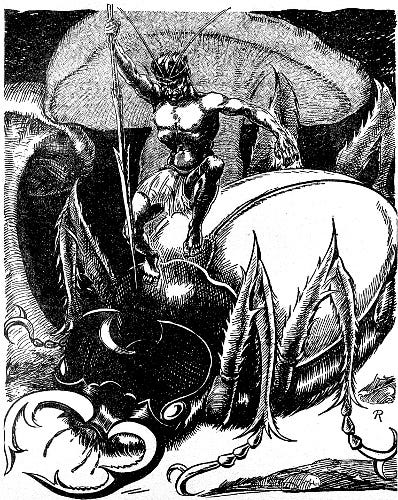

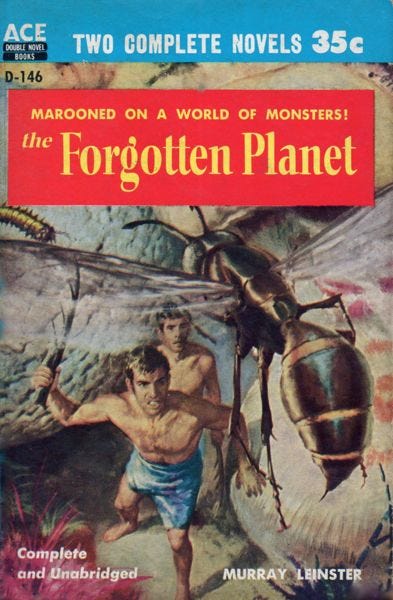
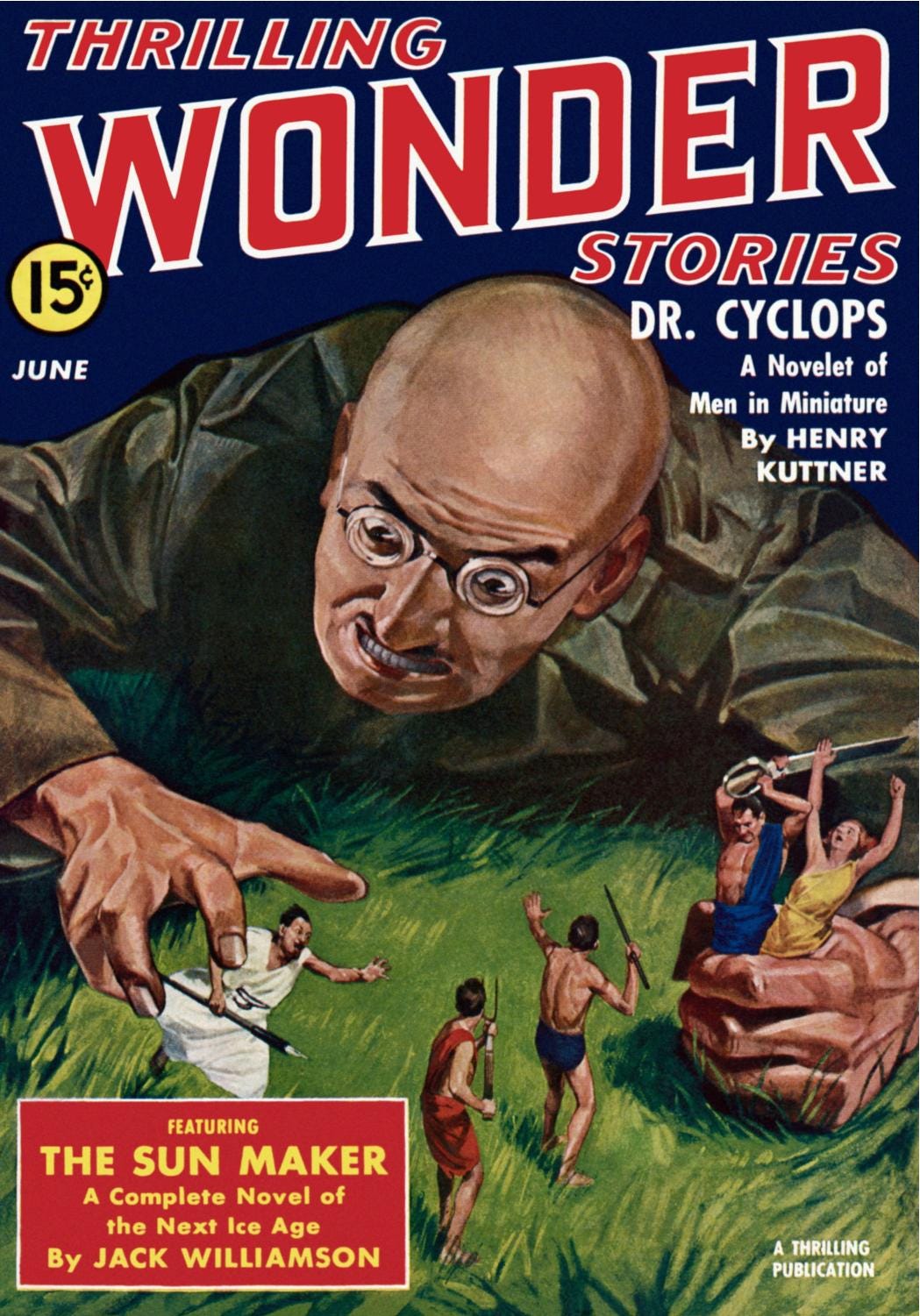

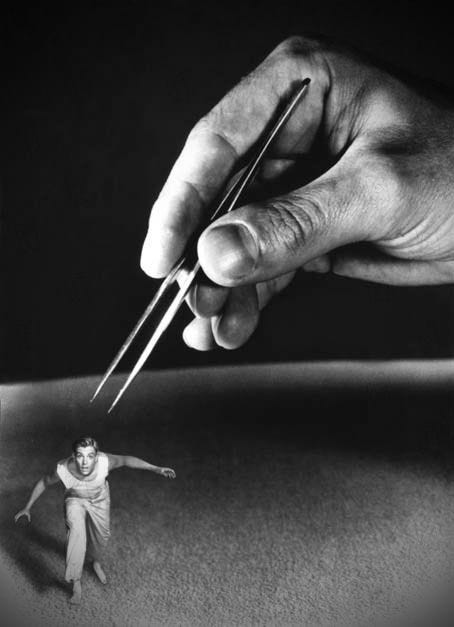
Just when I thought the the shrinking theme was over for the moment, here comes a photo still from the movie --"Dr. Cyclops." Synchronicity...you gotta love it!
https://twitter.com/PulpCovers/status/1674482091105349632?s=20